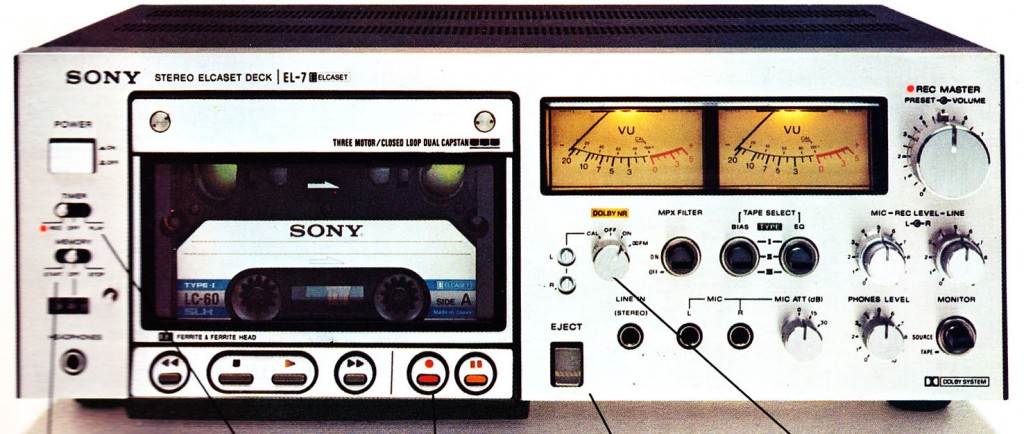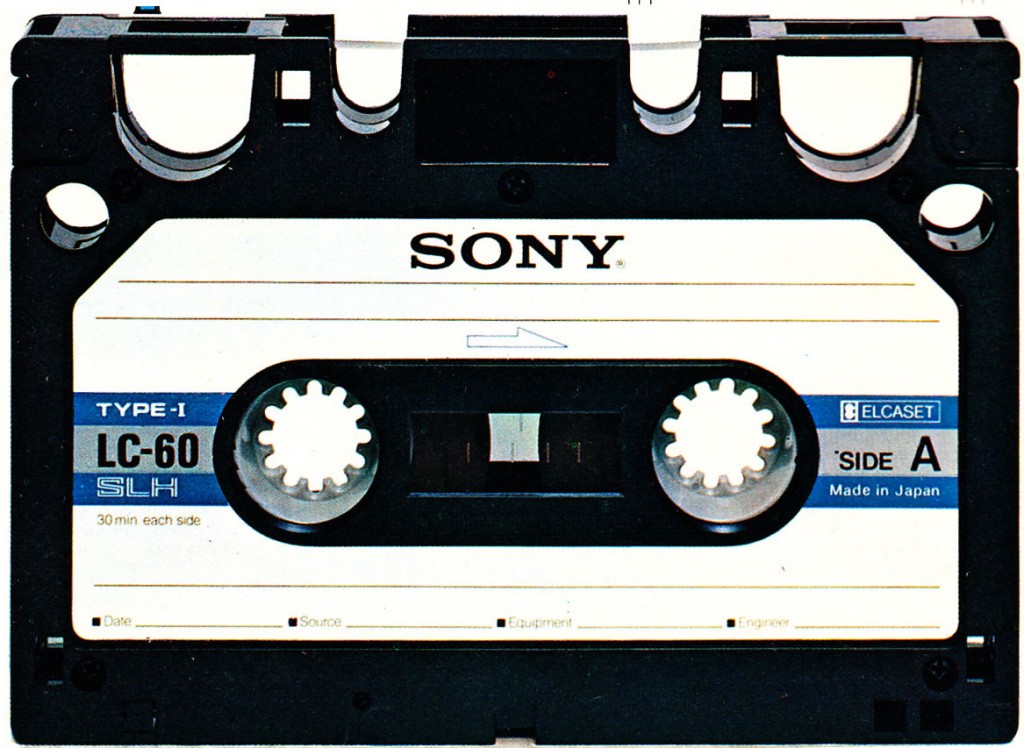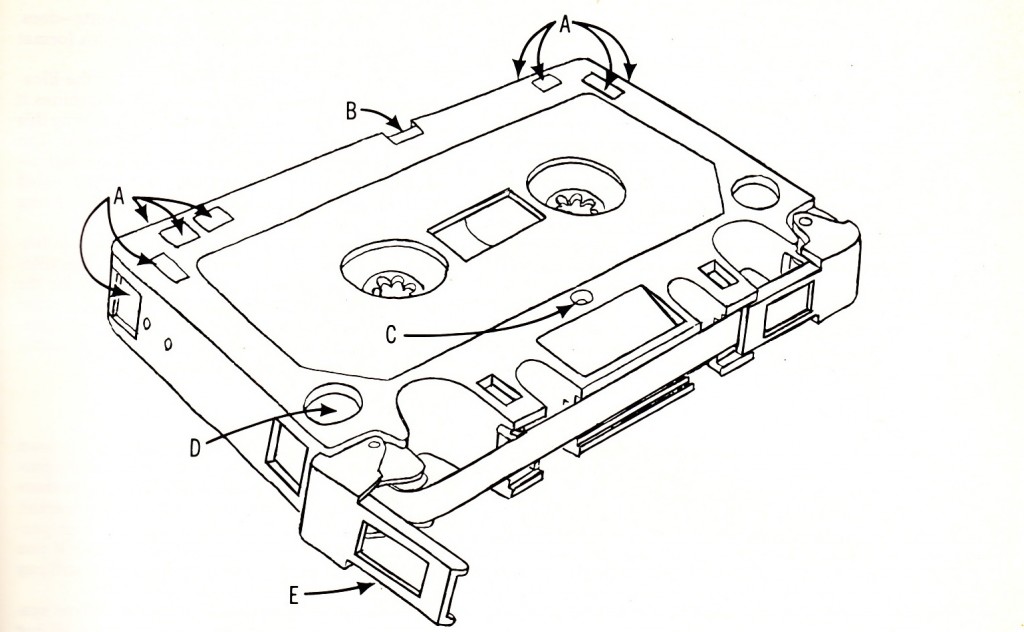 Here’s the thing about experimental anything. Experimental music, experimental writing, experimental technology: if it really, truly is experimental, that means it very well might fail. This is a necessary condition of experimentation. More than any other technology company, SONY is known as much for their failures as their successes. Not failures in a technical/engineering sense, but market failures. The fact that SONY has survived through so may famous failures is testament both to the intense brilliance of their successful experiments (Trinitron, The Walkman, the Compact Disc) as well as the depth of their commitment to innovation. Times are not good for SONY right now; the marquee position that they once held has largely been usurped by Apple and Samsung. But don’t believe that a comeback is impossible.
Here’s the thing about experimental anything. Experimental music, experimental writing, experimental technology: if it really, truly is experimental, that means it very well might fail. This is a necessary condition of experimentation. More than any other technology company, SONY is known as much for their failures as their successes. Not failures in a technical/engineering sense, but market failures. The fact that SONY has survived through so may famous failures is testament both to the intense brilliance of their successful experiments (Trinitron, The Walkman, the Compact Disc) as well as the depth of their commitment to innovation. Times are not good for SONY right now; the marquee position that they once held has largely been usurped by Apple and Samsung. But don’t believe that a comeback is impossible.
 The Elcaset was a SONY-driven consumer analog tape format introduced in 1977 (TEAC, Technics, and JVC also marketed compatible decks). Essentially, Elcaset was a large cassette tape (approx. the size of a Beta) that used 1/4″ (rather than 1/8″) tape, plus it ran at 3.5 (rather than 1.75) IPS and used VCR-like extra-shell tape handling. The hope was to offer the performance of open-reel tape machines with the convenience of the compact cassette. You can read a quick description of the technology at this link. For a much more detailed account, I have scanned a three-page article from HIGH FIDELITY, 2.77, by one Larry Zide. Zide provides detailed analysis of the technology and also offers his personal guess as to its market viability.
The Elcaset was a SONY-driven consumer analog tape format introduced in 1977 (TEAC, Technics, and JVC also marketed compatible decks). Essentially, Elcaset was a large cassette tape (approx. the size of a Beta) that used 1/4″ (rather than 1/8″) tape, plus it ran at 3.5 (rather than 1.75) IPS and used VCR-like extra-shell tape handling. The hope was to offer the performance of open-reel tape machines with the convenience of the compact cassette. You can read a quick description of the technology at this link. For a much more detailed account, I have scanned a three-page article from HIGH FIDELITY, 2.77, by one Larry Zide. Zide provides detailed analysis of the technology and also offers his personal guess as to its market viability.
DOWNLOAD ZIDE’S ARTICLE: Elcaset_Feb1977
 Even if you’ve never heard of Elcaset, I think you can probably guess how it fared in the marketplace: miserably. Making this chapter in SONY history little more than a tragic harbinger of the coming Betamax fiasco. But then what happened to all of those thousands of unsold Elcaset machines and pieces of tape stock? Why do they rarely turn up for sale? If you’re Finnish, you already know the answer. Very bizarre.
Even if you’ve never heard of Elcaset, I think you can probably guess how it fared in the marketplace: miserably. Making this chapter in SONY history little more than a tragic harbinger of the coming Betamax fiasco. But then what happened to all of those thousands of unsold Elcaset machines and pieces of tape stock? Why do they rarely turn up for sale? If you’re Finnish, you already know the answer. Very bizarre.
If you want to learn way, way more about Elcaset, just click here…
20 replies on “Forgotten Formats: The Elcaset”
If you ever get a chance–there’s a documentary on the 8-track tape (the 70’s car-stereo cartridge format, not the multitrack machine) called “So Wrong They’re Right” that touches briefly on the Elcaset, among other obscure formats.
Currently up on youtube if you’re curious:
http://www.youtube.com/watch?v=B7nva7meVv0
Great tip, thanks Eli! c.
Chris, this is a good summary of the Elcaset. A couple of other points:
1. the idea of a 1/4″, 3.75IPS self-contained tape cartridge actually dates from early 60’s, via RCA. See:
http://archive.org/details/Revoluti1958
Scan ahead to 7:40, for some reason two films were combined in one digi-video and the first film has nothing to do with RCA’s 1/4″ tape cartridge. Anyway, this format fared in the market about as well as the Elcaset.
2. Larry Zide was the founder and publisher of db Magazine, which was a pretty good pro-audio mag back in its day. He also wrote for High Fidelity over the years.
3. the Elcaset was a serious threat to Philips Compact Cassette system as far as attainable audio performance. However, Philips had millions of cassettes already in the market, the format had been adopted and was liked by the mass market, and cassette players were starting to be more common in cars when the Elcaset came along. So, Sony was fighting an uphill battle, with victory unlikely. The Japanese manufacturers, especially Nakamichi and Teac/Tascam, greatly improved the quality of cassette recording and playback equipment in the 1980s, and the Sony had major
success with the Walkman, which made cassettes more popular than LP records (to the chagrin of people who appreciated audio quality over convenience).
4. I remember reading about the Elcaset as a tyke, and considering buying a machine and piles of tapes when the US closeout/surplus sales happened in the early 80’s. But by then I had a reel-to-reel deck (Pioneer RT-707), which smoked both Philips cassettes and Elcasets in performance. Heck, I still listen to tapes I made on that Pioneer deck and smile at the good sound quality. Definitely the best expenditure of any paper-route money I ever made.
— Tom Fine
Thanks for this Tom. I’ve recently gotten into the old DB mags, so that would explain why Zide’s name sounded familiar. The RT-707 is a pretty iconic piece huh. I remember seeing a lot of those back in the day. Is the 707 considered a good deck to own, in terms of performance and reliability?
Chris, totally unrelated to Elcasets, but you asked … For some getting into reel-to-reel today, I definitely can still recommend a Pioneer RT-707 or RT-701, which is the same thing without auto-reverse playback. They show up on eBay all the time and more are in decent working condition than not. Some got played to death. The common thing to break is the belt that drives the mechanical counter. Since the counter is useless (it’s not counting feet, not counting seconds, so what’s the point?), this shouldn’t matter. Keep in mind there are no spare parts out there for RT-707’s, Pioneer long ago went out of the tape machine business. This is a quarter-track deck, 3.75IPS and 7.5IPS. It has primitive bouncing and overdubbing capabilities, plus the ability to mix mic and line inputs. Auto-reverse is accomplished by putting aluminum tape at the end of side 1, a sensor then activates reverse-play on playback and side 2 is played by the far-left head (side 1 is played by the far-right head). It records only in the forward direction. It’s _heavy_ and all-metal, built like a brick you know what. Even the knobs and buttons are solid for a 70’s piece of Japanese gear. I still have mine, although the heads are badly worn. It’s literally the first dollar I made, so I’ll keep it forever. Just to be clear, I think the best consumer/pro-sumer deck ever to come out of Japan was the Technics 1520. That late-era Tascam models are also superb tape-driving machines. I use a late-era Tascam 44-OB to play and dub quarter-track tapes.
— Tom Fine
IMO fooling with consumer open reels is silly when there are Ampex 350, AG350 and AG440 transports and solid state Ampex, Lang, and Inovonics electronics floating around cheap. Yes, they are heavy. But, parts are available, and the level of precision is at a whole other level. It’s like trying to hot rod Chevys on a planet where Ferrari Daytonas are giveaway items.
That video is pretty great btw, thanks for the link. I love how Nipper is backlit and they sloooooooowly bring up the front light on him. Any idea how common these RCA cassette machines were? I can’t ever recall seeing one or their media. Anywhere.
Chris, the RCA system did not catch on as a mass medium, but RCA did produce many cartridges and I think it had a longer life in specialty stuff like training/education. RCA smartly had a good bit of content ready to go when the players were introduced, so the tapes do show up on eBay frequently. However, I doubt they made and sold more than one run of the players. Within a very short time, the Muntz 4-track cartridge came out, which was essentially the same format only in a looped cartridge with much cheaper players (including car players). Then the Lear 8-track came out, had its reign and was eventually put down by the Compact Cassette. At one time or another, Fine Recording’s duplicating operation handled all these formats, plus quarter-track reels, except the RCA cassette (only RCA duplicated those, at least at first). We had a Muntz player when I was a kid. I remember that 4-track Muntz tapes included some Command albums plus a Flintstones tape and some other silly kids’ stuff. We also had a couple of the early tube-electronics Lear players, and the early 8-tracks included the fake “scared astronaut” Jose Jimenez (which would totally not pass PC muster today).
There were several other ill-fated tape-cartridge systems developed in the 60’s. Philips came out with a mini-cassette before the Microcassete, which caught on and remained in use for decades. Remington came out with a cartridge system that got some participation from a few of the record labels. And there was a competing 1/8″ dictation system in the early days of the Compact Cassette, I forgot who made it. Philips might have sued them into submission. Also, IBM had magnetic belt systems for dictation-recording (different from the Dictabelt system, which was a grooved belt recorded and played by a stylus).
— Tom Fine
There are a couple different iterations of the players, and so while only one run may have been made for consumer sale, OEM branded versions or educational market variants (“Lyceum” was RCA’s edu-market label) were sold for a minimum of five or six years. Educational systems tend to have a LONG life, because materials get incorporated into lesson plans and on the corporate/franchise side because they value the training materials highly and there is incentive to use them a long time.
The RCA megacassettes from the very late 50s were common enough that I have seen at least half a dozen of them, plus the tapes turn up from time to time. I have a full set of 1961 Ford dealer sales audio tapes to be played for salesmen in this format.
A few were used for pilot training materials, I think Jeppesen had them, and had stuff for general sale and for client airlines. You hear audio from one in particular, “ATC Clears”, on several movie soundtracks and if I remember right on the outro, first track on “Autoamerican”. Probably Mike Chapman got it off air from a movie.
http://www.ebay.com/itm/JEPPESEN-atc-clears-ATC-CLEARANCES-LP-booklet-and-training-map-1969-/150780926064?pt=Music_on_Vinyl&hash=item231b3e5870
Mine dates to ’63 or so.
Many other “proprietary” (i.e., ones we aren’t used to) formats existed. One was a tape cart that was actually the plastic cartridge Super 8 movie film came in: it was for a tape machine using a Super 8 film mechanism for hobby user film sync. Disney sold a cartridge machine with a cart smaller than a Lear Jet 8 track and tapes with Disney content on them. A few other educational/ health tapes were made, one I remember on not smoking, another on women’s monthly issues, also. I’m going to guess there are a minimum of ten different ones all told.
In the spring of 1979 EL 5 and 7 was offered for around 2400crowns for 5 and around 2800 crowns for7,5 cassettes were included.No other decks were dumped out.Cassettes was available,but no campaign.The decks stood in huge stacks in the shops.It lasted about 6 months.I estimate it to a few thousand decks.1982 was the cassettes gone.Spareparts lasted to the 90s. Was LD777 really serial-produced and for sale in the shops? E-94
Hi,
I want to find informations about repair and set ELCASET EL-7 and EL-5 from http://www.elcaset.ca. When you have it, please send me via e-mail.
Thanks,
Pavel Bartosik
Has anyone seen the 3M Quickload Cartridge. It was almost identical to the Elcaset? I had assumed that it had appeared earlier than the 1962 Philips Compact Cassette, but it may have been a licensed version of the Elcaset.
Has anyone seen the 3M Quickload Cartridge? It was almost identical to the Elcaset. I had assumed that it had appeared earlier than the 1962 Philips Compact Cassette, but it may have been a licensed version of the Elcaset.
I was just handed a Sony Elcaset (Model 5, I believe), a few months back. I had never heard of these things either until this friend of mine showed it to me. He bought it many years ago for next to nothing at an estate sale. It came with 3 tapes. From day one, he could never get it to play so he set it aside and forgot about it. On one of my visits, he pulled this thing out and asked me if I wanted it. So, basically free.
I am good at fixing old audio equipment like this so I took it home and noted that everything was working. But there was some sort of ‘machine gun’ type sound pounding out of both channels and the VU meters would jump with the noise. It turned out to be a cold solder joint in the Dolby circuit, which I reseated and now it works fantastic.
But, my point is, they don’t make them like they used to. This thing is built like a tank and weighs about as much. I haven’t seen that many mechanical relays since I used to work on 8-Track players. It’s not a useful device by any means in this day and age, but still makes a good conversation piece.
Hi
I am fascinated by Elcaset, I have two machines a Technics RS-7500 which works perfectly and a Sony EL-5 that has been modified by a studio supply company called Mediatech, I am at present returning the EL-5 to standard state, I have removed all the mods carried out by Mediatech, but they fitted there own set of heads to this machine, which I don’t think are that good.
So I am wondering if anyone has a set of heads for a Sony EL-5 they would sell me.
Regards
Gary
I have an el5 that I no longer need
Hi, Jim Nicol! I am interested in your EL-5. Where are you situated? Aivars
does anyone know of video on youtube or elsewhere where they show how to open the Elcaset tape and lubricate it?
I bought the Sony el-7 in 1977. The el-7 is still working. Never replaced bels nor any other component except meter lights. It records fantastic. I will never get rid of this machine. I have used it nearly every day. When I buy a new record, I record it and listen to the record on the sony elcaset.